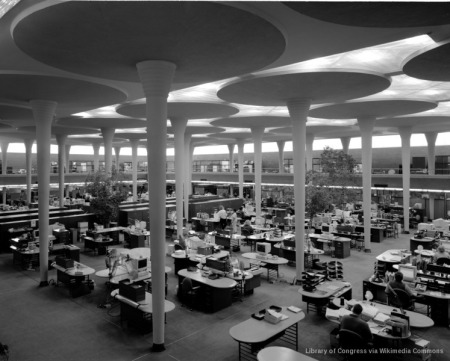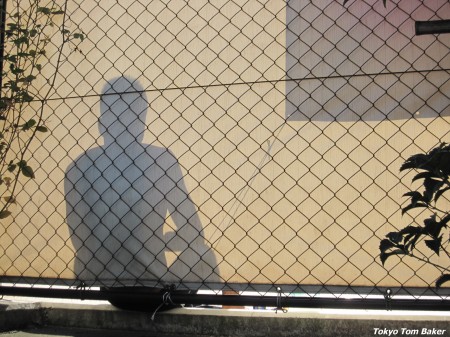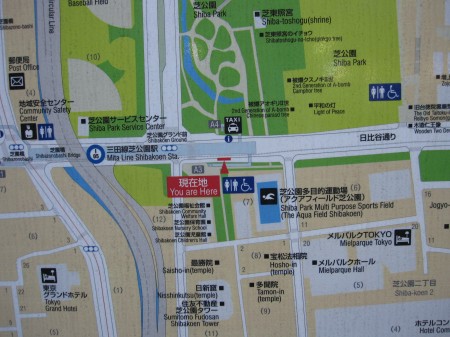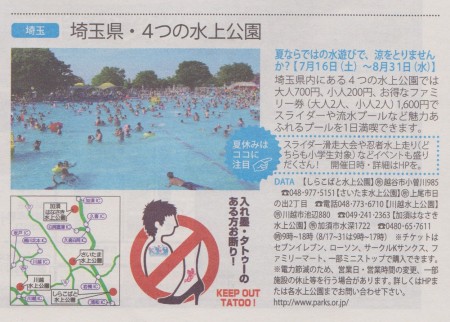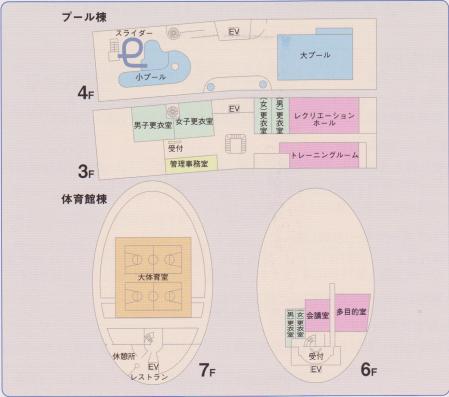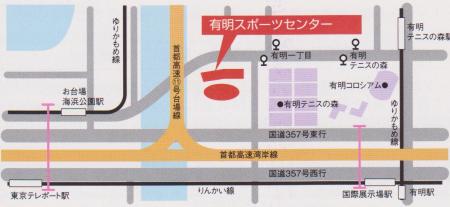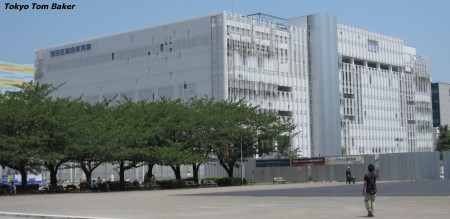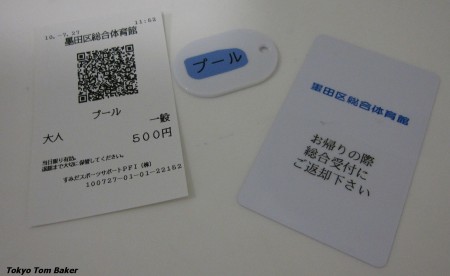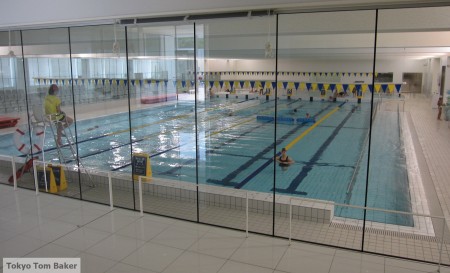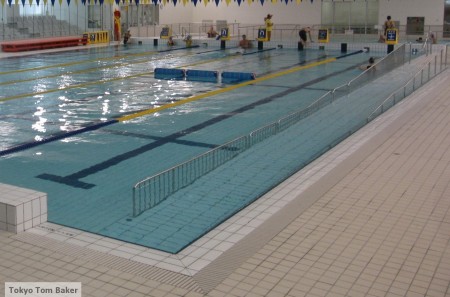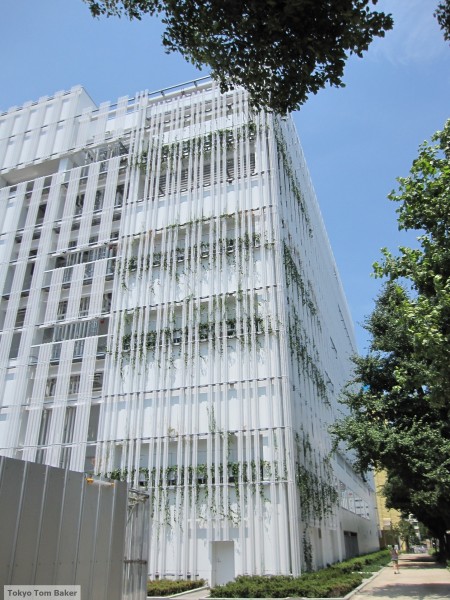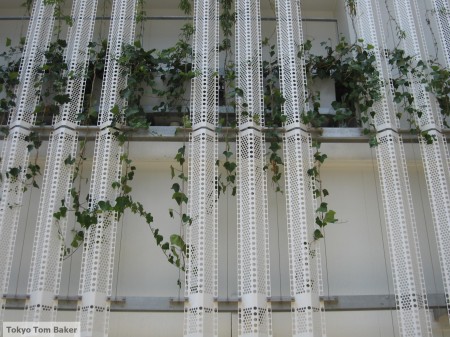
Getting off the subway at Nishi Waseda Station on the Fukutoshin Line last month, I intended to go directly to the Shinjuku Sports Center for a swim.
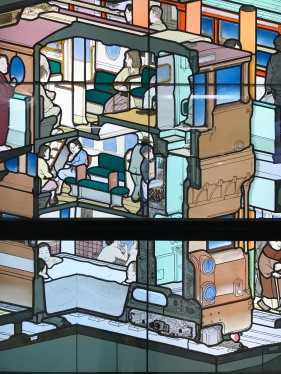 But as soon as I reached the ticket gate on my way to Exit 3, I was stopped in my tracks by the sight of a large stained glass window that was clearly the work of one of my favorite Japanese artists, Akira Yamaguchi.
But as soon as I reached the ticket gate on my way to Exit 3, I was stopped in my tracks by the sight of a large stained glass window that was clearly the work of one of my favorite Japanese artists, Akira Yamaguchi.
Yamaguchi’s art is fantastic – in every sense of that word. He combines traditional Japanese styles and subject matter with intricate renderings of fantasy machines, often in panoramic murals of mind-boggling detail and complexity. His cutaway views of urban infrastructure, like the one in this window, call to mind the work of David Macaulay, even while those views are often framed or divided by drifting clouds in a technique borrowed from Japanese art of centuries past. You could call his work steampunk or Nihonga or both, but Yamaguchi has a surreal imagination and sense of humor that is all his own.
 The stained glass window, for example, features a cutaway view of a triple-decker subway train that has a communal bath on its lowest level. That’s the kind of silliness I love about his pictures.
The stained glass window, for example, features a cutaway view of a triple-decker subway train that has a communal bath on its lowest level. That’s the kind of silliness I love about his pictures.
Another little detail worth noting is the woman standing on a platform in front of a sign that identifies the station as 西早稲田, Nishi Waseda.
Continuing out Exit 3 of Nishi Waseda Station, you’ll find a tree-filled park. In the middle of the park stands the Shinjuku Sports Center. The trees make the building difficult to photograph, but the pool is behind these foggy windows:
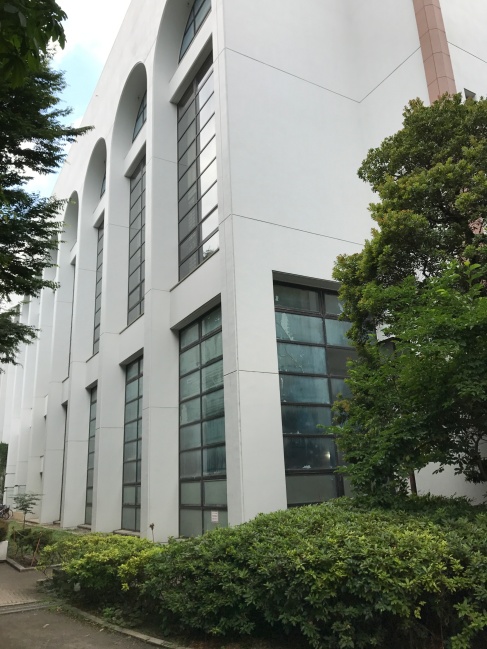
Admission is 400 yen, and you’ll need a 100 yen coin to use as a deposit for a locker in the rather Spartan locker room. (It has benches and a spin drier, but not much else in the way of amenities.) The locker keys are attached to wristbands you can wear while you swim, but the first locker I put my clothes into turned out to have a broken wristband. So, I moved my stuff to a different locker and headed out to the pool.
The pool is 25 meters long and six lanes wide. One lane appeared to be permanently set aside for walking, and a swimming lesson began in one of the other lanes while I was there, which left the remaining four lanes slightly crowded. There is also a large shallow kiddy pool. Between the two pools, on the side opposite the locker rooms, there is a warming room where you can sit when the lifeguards call a break from swimming, as they seem to do every hour at most public pools in the Tokyo area.
One wall of the pool area is adorned with a large tile mosaic of a rainbow. Part of my mind recognized this as an effort to create a cheerful atmosphere, while another part – which I tried to suppress – found it a bit dasai. This uncharitable thought may have been influenced by the dim lighting at the time of my visit. It was a weekday morning, and most of the light came from outside, muffled by tree branches and foggy glass. It might be brighter inside at night.
But dim lighting or not, I had to admit that the place was immaculately clean and – aside from one broken wrist strap – very well maintained. Also, each of the staff members I briefly dealt with was very pleasant and helpful. This included a guy who came pushing a broom through the locker room as I was getting dressed to leave. When I pointed out the broken wrist strap, he ran out and came back a moment later with a roll of heavy tape that he used to seal the locker shut so no one else would try to use it.
By the time you read this, I am sure it will have been repaired.
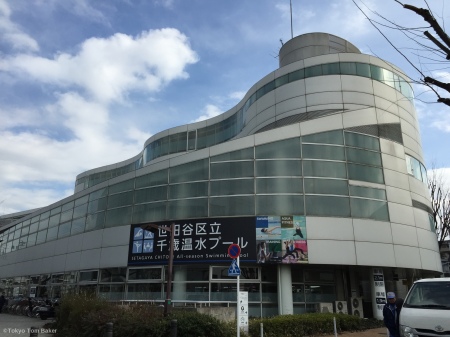
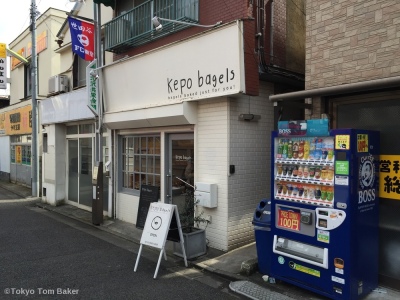
 A bagel, like a swimmer, approaches perfection by spending time in the water. Good bagels are boiled before they are baked. According to “
A bagel, like a swimmer, approaches perfection by spending time in the water. Good bagels are boiled before they are baked. According to “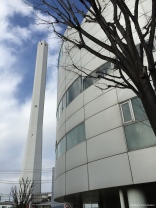 Having stowed a couple of bagel sandwiches in my gym bag, I set off for the pool. Even though it was well over a kilometer from Kamikitazawa Station, I was able to find it easily by using the tall chimney of a garbage incineration plant as a navigational guide. Just like
Having stowed a couple of bagel sandwiches in my gym bag, I set off for the pool. Even though it was well over a kilometer from Kamikitazawa Station, I was able to find it easily by using the tall chimney of a garbage incineration plant as a navigational guide. Just like 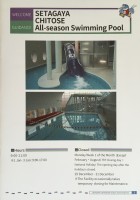 Like most pools attached to incinerators, the pool is a gorgeous contrast to its power source. It’s part of an architecturally wacky building that also includes a gym and a café. The pool itself is in a wing of the building that hovers over a sunken outdoor atrium. The ceiling over the pool is oddly angled, like the lid on a rectangular yogurt carton that has been partially peeled open. This makes it slightly disorienting if you’re trying to use the ceiling as a guide to swimming in a straight line while doing backstroke.
Like most pools attached to incinerators, the pool is a gorgeous contrast to its power source. It’s part of an architecturally wacky building that also includes a gym and a café. The pool itself is in a wing of the building that hovers over a sunken outdoor atrium. The ceiling over the pool is oddly angled, like the lid on a rectangular yogurt carton that has been partially peeled open. This makes it slightly disorienting if you’re trying to use the ceiling as a guide to swimming in a straight line while doing backstroke.